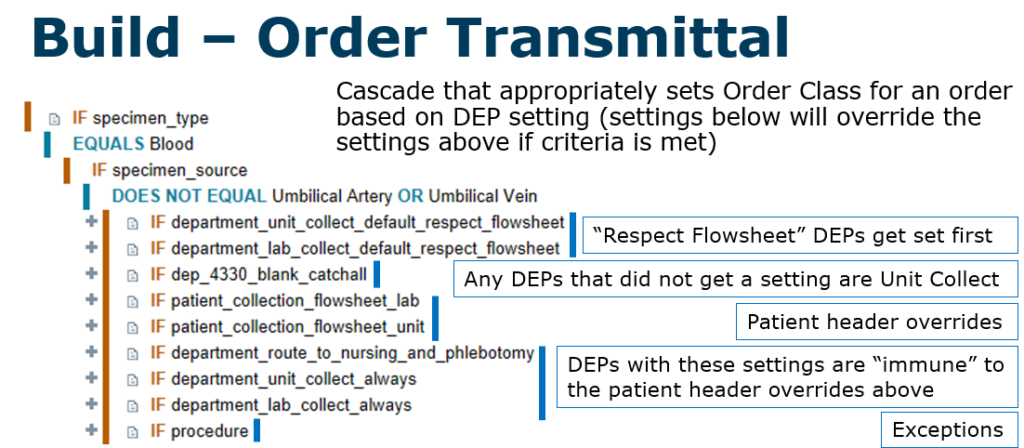Honeydew had the opportunity to return to present with a client partner at 2024’s Executive War College (EWC), the premier clinical laboratory management conference. This blog provides a recap of our presentation and three Beaker projects clients can undertake to reduce pre-analytical errors – just one example of the value we add.
Why Target Pre-analytical Improvements?
Specimens spend about 60% of their life cycle in the pre-analytical phase – defined as test selection, patient identification, collection, handling, and processing (pipetting, centrifugation, and more).
The pre-analytical phase is considered one of the most error prone steps to testing. Pre-analytical errors make up 46 to 68.2% of diagnostic testing errors.1
The pre-analytical phase has the highest cross-over between laboratory professionals and other clinicians, and is often when the most friction is felt. When designing, launching, and subsequently optimizing a new information system, focusing on improving the pre-analytical phase has allowed us to lower the risk of error and increase communication between lab and patient facing clinicians.
Project 1 – Novel Way to Set Default Blood Collectors by Department
Organizations have a range of rules regarding whether nurses or phlebotomists collect blood specimens for different departments. Epic uses Order Transmittal (OTX) to set this default (known as order class), and traditionally build for assigning order class for locations or departments lives directly within OTX. If a department or location needs that default changed, that requires an OTX change; these changes must be made in each environment (no Data Courier) and typically can only be performed by certified analysts.
Honeydew pioneered a novel way of setting these defaults with one of our clients. Rather than setting department defaults directly within OTX, we set the default via a grouper item on each department (DEP) from which blood specimens could be collected. The advantage? No OTX change required – just an easy department setting change that can be migrated.
Project 1 Build
Any IP/ED department that collects blood has one of the following values specified in department grouper item I DEP 4330. IT works with lab and nursing managers to gather the default value for each unit.
- “Respect Flowsheet” settings: patients in DEPs with these settings can have order class changed via Lab Blood Collection flowsheet, from Hyperspace in the patient Storyboard or from Rover
- “Ignore Flowsheet” settings: patients in DEPs with these settings cannot have order class changed via the Storyboard or Rover
- Both Unit Collect and Lab Collect: a hybrid setting; patients in DEPs with these settings are sent to both phlebotomy and nursing. These DEPs determine who (nursing or lab) collects outside of Epic.

We use these settings in rule-based OTX properties (LRCs), which we have in a specific order in OTX.

Here is an example of a rule used for the Unit Collect Default – Respect Flowsheet OTX property; the other rules follow suit.

We have some additional build in place for making these assignments for procedural areas, but are beyond the scope of this article.
Client Outcome:
- We saw an order of magnitude fewer tickets at go-live related to changing departments’ default setting
- Changes unit’s default setting no longer required an Order Transmittal change – IT could just switch the DEP 4330 value. Any Beaker analyst could do this, and we had this item safe-listed so that it could be migrated without going to Change Control
- Smaller hospitals with limited phlebotomy staffing really liked the hybrid setting that allowed them to decide outside of the system whether phlebotomy or nursing collects (usually based on staffing)
- Higher satisfaction overall with Epic
Project 2 – Push Notifications for Redraws, Cancels, and Declined Add-Ons
Our client had a pain point around clinicians not receiving timely notifications of redraws, and we saw an opportunity to improve communication. This client uses Closed-Loop Criticals, and therefore nurses were already accustomed to receiving and responding to critical results push notifications on Rover. We wanted to extend this existing communication pathway to redraws.
Affected Users: Inpatient and ED RNs, LPNs, Charge Nurses, Technicians, Paramedics actively on patient’s treatment team at the time of redraw/cancel/declined add-on
- “Important” Rover push notifications for redraws for unit collect orders (action needed from nursing)
- “Informational” Rover push notifications for redraws for lab collect orders (no action needed from nursing)
After a successful launch of this functionality for redraws, our client expanded it to apply as well to cancels and declined add-ons.
- “Important” Rover push notifications for redraws or declined add-ons for unit collect orders (action needed from nursing)
- “Informational” Rover push notifications for all canceled orders (no action needed from nursing)
- “Informational” Rover push notifications for redraws or declined add-ons for lab collect orders (no action needed from nursing)



Project 2 Build
The build for this is simple. Epic’s extension (LPP) code template for Order Transmittal (OTX) push notifications (UC ORDER TRANSMITTAL PUSH NOTIFICATION EXTENSION [341462]) specifies the “what” and “who”, while OTX specifies the “when”.
The push notification template has a variety of configuration options
- Priority
- Insecure Text (notification overview on lock screen before authentication)
- Secure Text (notification overview after user authenticates)
- SmartText ID (body of message)
- Recipient parameters
In OTX, we have basic logic near the bottom of the rule which uses different push notification LPPs for unit and lab collect.

For cancels, the OTX logic was slightly more complex, since we only want to notify clinicians for select cancel reasons (e.g. we did not want push notifications going out for auto-canceled duplicate orders). Thus, via a rule and Order Transmittal property (LRC), we limited what cancel reasons could trigger a notification, and used that property in conjunction with the LPP to send out the notifications.

Client Outcome:
- On average, our client sends out about 10,000 of these notifications a month, greatly improving timeliness of recollections and reducing friction between clinicians and lab.
Project 3 – Optimization of Specimen Type and Source
Over time, there was extensive drift of specimen type (ORD 300) and specimen source (ORD 325) within our client’s system. This drift led to vague, redundant, or confusing values entered at ordering, requiring lab to call and clarify and slowing down processing. Our client initiated a project to streamline these values to refocus on clinical accuracy, and Honeydew implemented and brought the changes live.
We assembled an enterprise task force, comprised of subject matter experts from clinical pathology, molecular and cytogenetics spaces, anatomic pathology, and procedural areas. This task force defined the following goals and used them to drive specimen type and source cleanup
- Clarify naming (with compliance feedback) to support accuracy of specimen data in the chart.
- Specimen types should answer the question “physically, what is this specimen?”
- Specimen sources should answer “from where on the patient is this specimen?”
- Mitigate redundant values using synonyms.
- Deactivate values with little or no utilization.
- Deactivate vague “other” or “NOS” values in favor of specificity.
- Add laterality where needed.
- Facilitate ordering for clinicians and increase lab efficiency by reducing manual intervention.
After meetings to evaluate which types and sources to keep, modify, combine, or deactivate, the group arrived at clean and finalized lists. Honeydew then spearheaded the systematic review and replacement of types and sources in container types (OVM), AP Specimen Protocols (OVT), Procedure (EAP), Navigator Configuration (VCN), and other master files to align with our new clean lists.
We led an intensive testing effort, put together painstaking change control to prevent any build moving early to PRD, provided extensive tip sheets and training, devised a detailed data migration plan, and created a maintenance process for any changes down the road. We aligned go-live with a planned downtime, coordinated with our Epic TS to use a replacement utility to update any deactivated type/sources for future/standing orders that hadn’t yet been released.
Client Outcome
- The launch was seamless – we had fewer than 10 tickets for type/source EAP updates.
- Our client saw more than 50% reduction in type and source-related CRM cases in the six months after go-live compared to baseline, as well as a 30% reduction in cancellations due to type/source errors.
By making these Beaker optimizations, Honeydew helped our client relieve pre-analytical pain points for clinicians and lab and close communication gaps, contributing to better patient outcomes.
If you have any questions, reach out to us at [email protected].
- Alavi N, Khan SH, Saadia A, Naeem T. Challenges in Preanalytical Phase of Laboratory Medicine: Rate of Blood Sample Nonconformity in a Tertiary Care Hospital. EJIFCC. 2020;31(1):21-27. Published 2020 Mar 20. ↩︎
